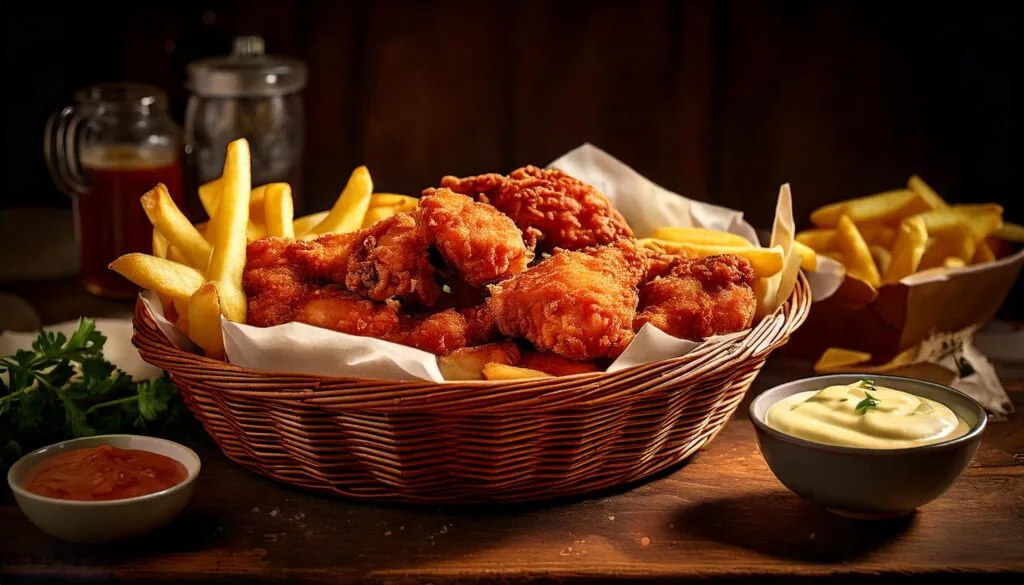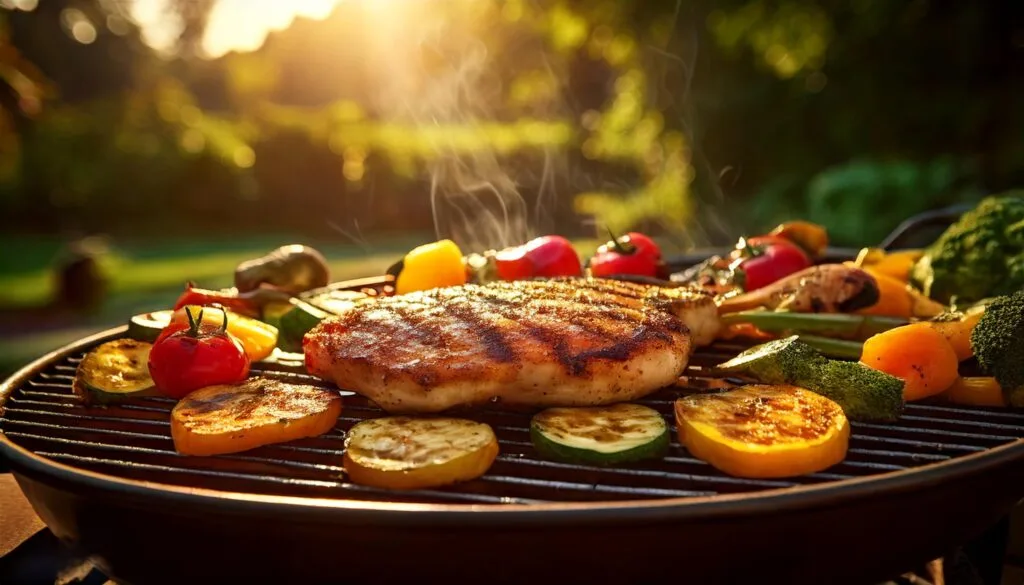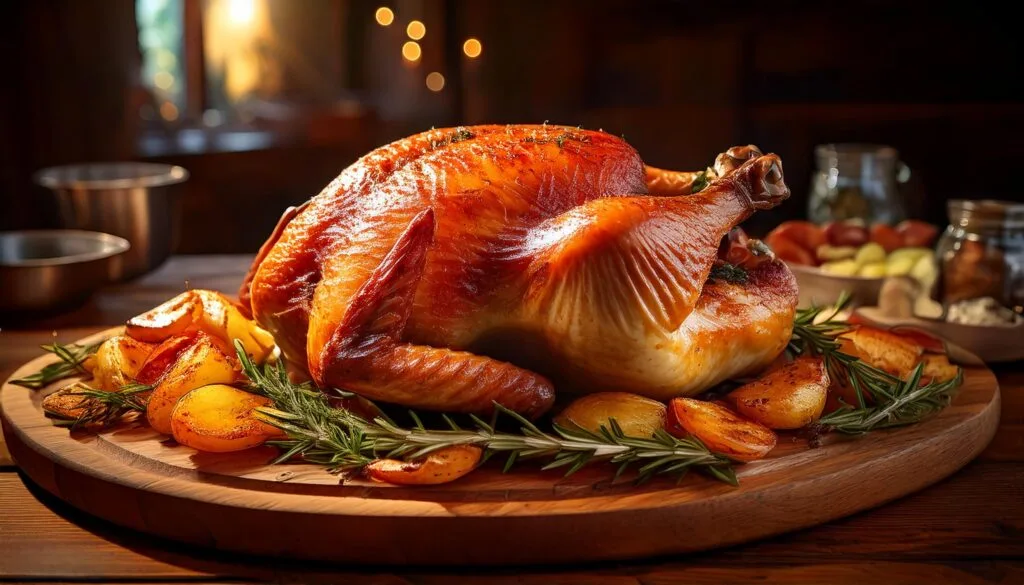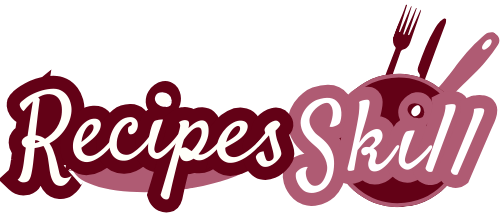Chicken is a beloved staple across countless cuisines, offering a blank canvas for flavors and a variety of preparation methods. But here’s the kicker: the way you cook chicken makes all the difference. Whether you’re roasting a whole bird to perfection or sautéing quick chicken breasts on a weeknight, choosing the right technique affects not just taste but also texture, nutrition, and even meal prep convenience.
This article breaks down the most popular chicken-cooking methods, their benefits, and when to use each one. Whether you’re a newbie in the kitchen or a seasoned pro, you’ll find actionable tips to elevate your chicken game. Let’s dive into Part 1 and uncover why oven-based cooking methods like roasting and baking deserve the spotlight.
Oven-Based Cooking Methods
Roasting Chicken: A Flavorful Classic
Roasting is hands-down one of the most popular methods for cooking chicken, especially for achieving a beautifully golden, crispy skin and juicy meat. This technique works particularly well for whole chickens or large cuts like thighs and drumsticks.
Benefits of Roasting Chicken
Roasting allows for even cooking and deep flavor development. Thanks to the dry heat of the oven, you’ll get a rich caramelization that amplifies taste. Plus, it’s perfect for entertaining or batch cooking, as it requires minimal attention once it’s in the oven.
Tips for Perfectly Roasted Chicken
- Preheat your oven to ensure consistent cooking. A temperature of 375°F (190°C) works for most cuts, but whole chickens might need a slightly higher temperature for crispier skin.
- Season generously with salt, pepper, and any preferred herbs or spices. A rub with garlic, rosemary, and paprika is a great start!
- Don’t skip resting time. Once out of the oven, let the chicken sit for 10-15 minutes before carving to lock in those juices.
Roasting is a fantastic option when you want maximum flavor with minimum effort. It’s the go-to method for Sunday dinners or holiday feasts.
Baking Chicken: A Healthy, Versatile Choice
If roasting’s the star of family dinners, baking is the unsung hero of weeknight meals. Unlike roasting, baking uses a gentler temperature (often 350°F or lower) and is best for smaller cuts like boneless chicken breasts or thighs.
Why Baking Chicken Is a Healthy Option
Baking uses less oil than frying and keeps the chicken moist while locking in nutrients. It’s ideal for health-conscious cooks who still crave tender, flavorful meat.
Tips for Successful Baked Chicken
- To prevent drying, coat the chicken lightly with olive oil or butter before baking.
- Use foil or parchment paper to trap steam for extra moisture.
- Experiment with marinades for added flavor think lemon-garlic or honey mustard!
Baked chicken is a no-brainer for meal prep. It pairs well with roasted veggies or salads and makes for excellent leftovers.
When to Use Each Method
Choosing between roasting and baking comes down to the dish you’re preparing. Roasting is best for occasions when presentation and flavor are priorities, while baking is perfect for quick, healthy meals. Experiment with both to find your personal favorite!
Pro Tip: Use a meat thermometer to check doneness. Chicken should reach an internal temperature of 165°F (74°C) to be safe to eat.
For more detailed tips on safe cooking temperatures, check out this guide on How to Use a Meat Thermometer for Perfect Chicken Every Time.

Stovetop Cooking Methods
The stovetop is where chicken transforms into a weeknight superstar. It’s fast, versatile, and allows for excellent control over heat and flavor. Let’s explore methods like sautéing, braising, and poaching that’ll help you whip up delicious chicken dishes in no time.
Sautéing Chicken: Quick and Flavorful
Sautéing is a classic technique for cooking smaller pieces of chicken quickly. It’s perfect for stir-fries, chicken strips, or any dish where you want tender meat and bold flavors.
Benefits of Sautéing Chicken
- Fast and efficient, ideal for busy weeknights.
- Allows for searing, creating a flavorful crust.
- Works well with marinades and sauces for extra punch.
Tips for Perfectly Sautéed Chicken
- Always preheat your skillet and use a small amount of oil with a high smoke point (like avocado or vegetable oil).
- Avoid overcrowding the pan; cook in batches to ensure even browning.
- Deglaze the pan with wine, broth, or lemon juice to create a quick and flavorful sauce.
Braising Chicken: Tender, Fall-Off-the-Bone Goodness
Braising combines stovetop and oven cooking to produce chicken that’s incredibly tender and packed with flavor. It’s an excellent method for tougher cuts like drumsticks or thighs.
Why Braising Works Wonders
- Perfect for making hearty dishes like chicken stew or coq au vin.
- The slow cooking process tenderizes meat while infusing it with the flavors of the liquid and seasonings.
Steps to Braise Chicken Like a Pro
- Sear the chicken first for a flavorful crust.
- Add aromatics like garlic, onion, and spices to the pot.
- Pour in liquid (broth, coconut milk, or tomato sauce) until it’s halfway up the chicken. Cover and simmer until the meat is tender.
Poaching Chicken: A Healthy, Low-Fat Option
Poaching is a gentle cooking method where chicken is simmered in water or broth. It’s fantastic for those looking to maintain the chicken’s natural flavor while keeping things light and healthy.
Benefits of Poaching Chicken
- Retains the chicken’s moisture and delicate texture.
- Great for shredded chicken in salads, sandwiches, or tacos.
- Requires minimal ingredients and effort.
How to Poach Chicken Perfectly
- Start with cold water or broth to ensure even cooking.
- Add aromatics like bay leaves, peppercorns, and lemon slices for subtle flavor.
- Keep the liquid at a low simmer (not boiling!) for best results.
Choosing the Right Method for Stovetop Cooking
When you’re in a hurry, sautéing is your best bet for quick and flavorful chicken. If you have time and want maximum tenderness, braising is ideal. And for light, healthy dishes, poaching is a foolproof method.
Pro Tip: Always pat your chicken dry before cooking to ensure proper browning and avoid steaming.
Grilling and Frying Methods

When it comes to creating bold, unforgettable chicken dishes, grilling and frying take center stage. These techniques infuse chicken with deep, smoky, or crispy textures that are impossible to resist. In this part, we’ll dive into the benefits, tips, and best scenarios for grilling and frying chicken to perfection.
Grilling Chicken: A Smoky, Healthy Option
Grilling is synonymous with outdoor cooking, but it’s also a versatile method that works on stovetop grills or in the oven. It’s perfect for chicken breasts, thighs, drumsticks, or even skewers.
Benefits of Grilling Chicken
- Imparts a smoky, charred flavor that’s hard to replicate with other methods.
- A healthier alternative to frying, as excess fat drips away during cooking.
- Ideal for marinades and rubs that enhance the meat’s flavor.
Tips for Perfect Grilled Chicken
- Marinate the chicken for at least 30 minutes to boost flavor and tenderness. Popular options include lemon-herb, garlic-soy, or BBQ marinades.
- Preheat the grill and oil the grates to prevent sticking.
- Cook chicken over medium heat to avoid drying it out. Use direct heat for thinner cuts and indirect heat for larger pieces like bone-in chicken.
For tips on making your chicken extra tender, check out our guide on how to cook chicken very tender
Pro Tip: For juicy grilled chicken, let it rest for 5 minutes after cooking to redistribute the juices.
Frying Chicken: Crispy Perfection
Few things are as satisfying as biting into crispy, golden fried chicken. Whether you prefer deep-frying, pan-frying, or air-frying, this method guarantees an irresistible crunch.
Benefits of Frying Chicken
- Delivers a crispy texture that’s impossible to achieve with other cooking methods.
- Can be customized with different breading and batter recipes.
- Perfect for comfort food dishes like fried chicken sandwiches or tenders.
How to Nail Fried Chicken Every Time
- Coat the chicken in seasoned flour or breadcrumbs for a crispy exterior. Add paprika, garlic powder, or cayenne for extra flavor.
- Use oil with a high smoke point, like peanut or vegetable oil, for deep-frying. Maintain an oil temperature of 350°F for consistent results.
- Drain fried chicken on a wire rack to keep it crispy, not soggy.
Air Frying: A Modern Take on Frying
For a healthier twist, air-frying offers all the crispy goodness of traditional frying without the extra oil. It’s a game-changer for health-conscious chicken lovers.
Tips for Air-Fried Chicken
- Use a light coating of oil or cooking spray to enhance crispiness.
- Avoid overcrowding the basket to ensure even cooking.
- Shake the basket halfway through to crisp all sides evenly.
Choosing Between Grilling and Frying
Grilling is your go-to for smoky flavors and a lighter meal, while frying is unbeatable for indulgent, crispy textures. If health is a concern, air-frying strikes the perfect balance between flavor and nutrition.
Pro Tip: For the best of both worlds, grill chicken first and finish with a quick fry or air-fry to lock in moisture and add a crunchy finish.
Slow Cooking and Pressure Cooking
If you’ve ever dreamed of perfectly tender, juicy chicken with minimal effort, slow cooking and pressure cooking are here to make your life easier. These hands-off methods are a favorite for busy weeknights or batch cooking, giving you flavorful results every single time.
Slow Cooking Chicken: Set It and Forget It
Slow cooking is ideal for busy days when you want a hearty, flavorful meal ready with minimal prep. It’s perfect for recipes like shredded chicken, soups, and stews.
Benefits of Slow Cooking Chicken
- Hands-off cooking: Add ingredients, set the timer, and go about your day.
- Infuses chicken with deep, rich flavors as it cooks slowly over several hours.
- Great for tough cuts like thighs and drumsticks, which become tender and juicy.
How to Slow Cook Chicken Like a Pro
- Add enough liquid (broth, coconut milk, or tomato sauce) to keep the chicken moist.
- Layer vegetables like onions, carrots, and celery at the bottom to prevent sticking and enhance flavor.
- Cook on low for 6-8 hours for the best texture and taste.
Pro Tip: Avoid lifting the lid too often during cooking it releases heat and slows the process.
Pressure Cooking Chicken: Fast and Flavorful
Pressure cooking has revolutionized how we prepare chicken. With an appliance like an Instant Pot, you can cook tender chicken in a fraction of the time it takes with other methods.
Why Pressure Cooking Is a Game-Changer
- Delivers tender, flavorful chicken in under 30 minutes.
- Works for everything from whole chickens to soups, stews, and shredded chicken.
- Retains more nutrients compared to boiling or roasting.
Tips for Pressure Cooking Chicken
- Use at least 1 cup of liquid (broth or water) to create steam for cooking.
- Season chicken generously before cooking to maximize flavor.
- Let the pressure release naturally for 5-10 minutes after cooking to avoid overcooking.
Pro Tip: For crispy skin, sear the chicken in the pressure cooker on the sauté setting before pressure cooking.
Slow vs. Pressure Cooking: Which One’s Right for You?
- Choose slow cooking when you’ve got time to let flavors develop and want a no-fuss approach.
- Opt for pressure cooking when you’re short on time but still crave a hearty, flavorful chicken dish.
Key Factors When Choosing a Method

Deciding on the best way to cook chicken depends on several crucial factors. Each cooking method offers unique advantages, and the right choice often boils down to your preferences, time constraints, and the flavor profile you want to achieve. This section breaks down the key considerations when selecting a cooking method for chicken.
1️⃣ Flavor and Texture Preferences
Different cooking methods yield distinct flavors and textures:
- Grilling: Offers a smoky, charred flavor and firm texture, perfect for summer barbecues.
- Roasting or Baking: Produces juicy, evenly cooked chicken with a crispy exterior, ideal for whole chickens or large cuts.
- Frying: Provides crispy, golden skin and juicy meat, a favorite for indulgent comfort food.
- Slow Cooking: Infuses deep, rich flavors and results in tender, fall-apart chicken.
- Pressure Cooking: Locks in moisture for quick and flavorful meals.
Questions to Ask Yourself
- Do you prefer crispy textures or tender, juicy meat?
- Are you looking for bold, smoky flavors or subtle, rich profiles?
2️⃣ Time Constraints
How much time you have is a significant factor:
- Quick Options: Pressure cooking, stir-frying, or grilling thin cuts are great when you’re short on time.
- Set-and-Forget: Slow cooking allows you to prep in the morning and enjoy a meal later.
- Weekend Cooking: Baking or roasting whole chickens takes longer but is perfect for leisurely days.
3️⃣ Health Considerations
Each method has its nutritional pros and cons:
- Healthiest Choices: Grilling, baking, and air-frying are low-fat methods that retain nutrients.
- Moderate Choices: Slow cooking requires added fats (like broth), but it’s still relatively healthy.
- Indulgent Options: Deep-frying adds calories and fat but delivers unbeatable flavor.
Pro Tip: Opt for lean cuts like skinless chicken breasts or thighs if health is a top priority.
4️⃣ Type of Chicken Cut
Some methods work better for certain cuts:
- Whole Chicken: Perfect for roasting or pressure cooking.
- Boneless Breasts: Ideal for grilling, stir-frying, or baking.
- Thighs and Drumsticks: Shine in slow-cooking and frying due to their higher fat content.
- Wings: Best suited for frying, grilling, or baking.
5️⃣ Equipment Availability
Your available kitchen tools can also guide your choice:
- Grills: For outdoor or stovetop grilling.
- Ovens: Versatile for roasting, baking, or broiling.
- Slow Cookers or Pressure Cookers: For low-effort meals.
- Stovetop Pans: Ideal for frying and sautéing.
Balancing Your Decision
Ultimately, the best cooking method is the one that matches your lifestyle, preferences, and the dish you’re preparing. Combining methods such as grilling chicken and finishing it in the oven can offer the best of both worlds.
Want to cook chicken like a professional? This guide will help you master chef-level techniques.
Conclusion
Finding the best method of cooking chicken truly depends on what you want to achieve in terms of flavor, texture, and convenience. Whether it’s the smoky char from grilling, the crispy perfection of frying, or the rich, slow-cooked tenderness that melts in your mouth, every method brings something unique to the table.
Recap of What Is the Best Method of Cooking Chicken
From grilling, roasting, and air frying to slow cooking and pressure cooking, we’ve explored the advantages and ideal uses of each approach. The key to mastering chicken lies in matching the method to the cut of meat, the tools available, and the time you have.
Personalize Your Approach
Experiment with different cooking techniques to find what suits your taste buds and lifestyle. Incorporate your favorite seasonings, marinades, or rubs to make the dish your own. Don’t be afraid to combine methods like searing before slow cooking for the ultimate result.
Now it’s your turn! What’s your favorite way to cook chicken? 🐓 Share your tips, tweaks, or even secret recipes in the comments! Let’s keep the conversation delicious and inspiring for everyone.
Whether you’re a beginner or a seasoned home cook, the perfect method is out there waiting for you. So, grab your apron, fire up your grill, or preheat your oven, and start experimenting today!
